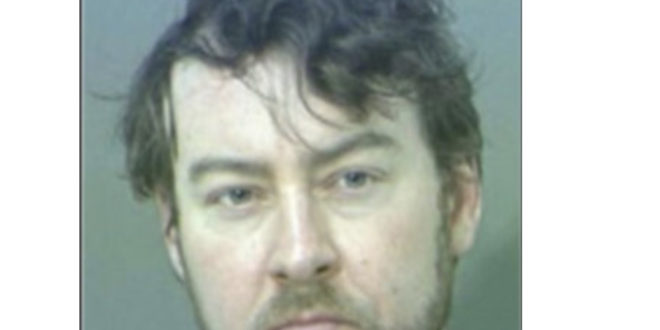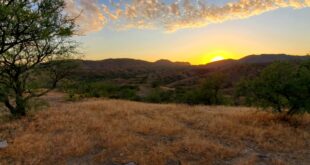NOTE: More than 2,557,537 acres have burned in 104 large fires/complexes in 12 states. All large fires in CA were active August 20. The Dixie Fire burned 35,000 acres and is now 662,547 acres. The Caldor Fire made a run of nearly 40,000 acres.

Tyler Bolen, U.S. Forest Service Special Agent:
I am a Special Agent with the United States Forest Service (the “USFS”), and have been for three years. Prior to this, I was a USFS Law Enforcement Officer for nearly eight years. I am currently assigned to the Shasta-Trinity National Forest; however, I periodically investigate crimes on other National Forests such as the Lassen National Forest. I am authorized, and presently assigned, to investigate and enforce violations of federal law that affect national forest lands, including willfully setting fire to any timber, underbrush, or grass upon lands owned by the United States, in violation of 18 U.S.C. § 1855.
Based on the facts set forth below, I submit that probable cause exists to believe that violations of 18 U.S.C. § 1855 (the “specified federal offense”), with respect to the “Ranch Fire” in Lassen County, California, was committed by GARY STEPHEN MAYNARD who agents have observed living out of his vehicle, which is a black 2012 Kia Soul displaying California license plate 6XBA609.
Based on my training and experience, I also know that arsonists derive pleasure and satisfaction from observing first responders react to the fires that arsonists set. Indeed, experiencing this pleasure and satisfaction is one of the primary motivators for arsonists to set fires. One way for arsonists to preserve these feelings of pleasure and satisfaction is to take photographs or record video footage of first responders reacting to fires that arsonists set. These photograph and video files are frequently stored in arsonists’ private residences, on their mobile cellular devices, or on their personal computers contained in their residences.
On July 20, 2021, at approximately 9:45 a.m., a wildland fire was reported by a mountain biker in the Sand Flat area on the western slopes of Mt. Shasta. I spoke with this mountain biker who advised that he had smelled smoke while riding his bike. The mountain biker eventually spotted the fire burning along the forest floor several hundred feet from the dirt road. This fire was later designated as the Cascade Fire. This mountain biker and a fellow mountain biker were very concerned and jumped into action by stomping along the edge of the ground fire and digging around its perimeter in efforts to prevent its spread. The mountain biker also called 911 to report the wildfire. At approximately 10:25 a.m., firefighters arrived on scene. The actions of the mountain bikers and final suppression efforts of the firefighters prevented the Cascade Fire from developing into a large-scale wildfire and was ultimately contained to an approximate 100-200 square feet area of burned vegetation. The Cascade Fire occurred on federal lands designated as the Shasta-Trinity National Forest within the Eastern District of California.
On this day, Inv. Murphy observed two vehicles parked along this un-named dirt road approximately 150-200 yards from the Cascade Fire. Inv. Murphy first approached the closest vehicle to the Cascade Fire, a black Kia Soul displaying California license plate 6XBA609 (the SUBJECT VEHICLE). At that time, the SUBJECT VEHICLE’s front tires were positioned in a deep rut and the rear underside was high-centered on a large boulder. Inv. Murphy observed a white male laying on the ground underneath the SUBJECT VEHICLE and was digging and moving about in efforts to free the SUBJECT VEHICLE from its immobile position. Inv. Murphy introduced himself as an official with the Forest Service and requested the man’s name. This man did not come out from under the vehicle and did not identify himself, but instead stayed under the vehicle and mumbled words that Inv. Murphy could not understand. Inv. Murphy advised this man that he would like to ask him a few questions. The man quit digging and stood up. Inv. Murphy began to ask questions about the nearby fire to which this man responded that he did not know anything about any fires. As Inv. Murphy attempted to ask additional questions, this man asked Inv. Murphy to pull his SUBJECT VEHICLE from its stuck position. Inv. Murphy replied that he was not authorized to use his government vehicle to tow other vehicles. Upon hearing this, the man appeared agitated, and turned away from Inv. Murphy where he returned to digging and working to free the SUBJECT VEHICLE from its position. Inv. Murphy recognized the man’s uncooperative and agitated behavior and felt it was safest to distance himself from this man. Prior to departing, Inv. Murphy took a photograph of the SUBJECT VEHICLE.
After meeting with Witness 1, I proceeded to examine the location where the SUBJECT VEHICLE had been photographed by Inv. Murphy in its stuck position within the rough roadbed. During my examination of this location, I noticed a small burned area on the ground just a few feet off the road. The small burned area consisted of burnt sticks and burned material that was consistent with newspaper. I could still see what looked to be newspaper print on some of the partially burned pieces. The small ground fire had been set along the forest floor and the ashes and the burned paper was still fluffy and grey which indicated that the fire had not been extinguished with water. Instead, the fluffy ash and fine pieces of paper were still in-tact, indicating that the fire had burned out on its own. There was no evidence of a campfire or a campfire ring; the small fire had been set directly on the uncleared forest floor along the road where the SUBJECT VEHICLE had been recently positioned.
The two small ground fires were each determined to be acts of arson and, indeed, classified as two additional arson fires. During my examination of this location, I also located a wooden match on the ground at the location where the SUBJECT VEHICLE had been stuck. The match head was still in-tact, indicating that this particular match had not been used.
- The dirt roadbed where the SUBJECT VEHICLE had been stuck and eventually travelled through contained the tire track impressions for the SUBJECT VEHICLE. Additionally, Inv. Murphy’s photograph of the SUBJECT VEHICLE includes an angle of the tires. I reviewed this photograph and could see that the tread pattern, as photographed on the tires of the SUBJECT VEHICLE, matched the tire track impressions in the soil.
I also arrived on scene of the Everitt Fire. This was the second wildland arson fire in less than twenty-four hours on Mount Shasta near the Everitt Memorial Highway. After visiting the scene and examining the area, I concurred that the ignition of this fire was not only suspicious, but once again consistent with arson.
- I observed the Everitt Fire had ignited along the dirt road and I began examining tire track impressions left behind in the soil. Beginning near the fire’s edge, I observed three sets of different tire impressions on the road. Two of the tracks were consistent with aggressive (all- terrain/ mud tire tread) tires used by responding fire trucks. I observed the third set of tire impressions to be similar to the SUBJECT VEHICLE’s tire impressions and noted how the more aggressive fire truck tire impressions crossed over on top of the suspected SUBJECT VEHICLE’S tire impressions—indicating that the SUBJECT VEHICLE had driven along the dirt road prior to the arrival of the fire trucks. A short distance later, there was a wide shoulder along the dirt road and I observed tire impressions consistent with one of the fire trucks having turned around and returned to the fire.
A lengthy investigation to prove the suspects identity followed for multiple fires, to include video and cell over actions through the districts where the fires started. All tied to the suspect. All trails led to suspect Maynard, his auto, his computer, his cell phone.
Lassen County Sheriff Deputy Steven Lawton booked MAYNARD in to the Lassen County Jail for violating California Penal Code 409.5, unauthorized entry into a closed emergency area. Later that evening, Deputy Lawton advised MAYNARD that a felony charge of arson (California Penal Code 451) was being added. At that point, Deputy Lawton advised me that MAYNARD became enraged and began kicking the jail cell door and screamed, “I’m going to kill you, fucking pig! I told those fuckers I didn’t start any of those fires!”
- Following MAYNARD’s arrest, the SUBJECT VEHICLE was removed by USFS officers and is currently being stored as evidence of arson at a secure Forest Service facility in Susanville. MAYNARD’s personal property, to include his phone, was secured within the SUBJECT VEHICLE at the time MAYNARD was arrested.
- the inclusive affidavit presenting the procedures and forensic evidence were submitted by
TYLER BOLEN Special Agent
U.S. Forest Service
 Soldier of Fortune Magazine The Journal of Professional Adventurers
Soldier of Fortune Magazine The Journal of Professional Adventurers






